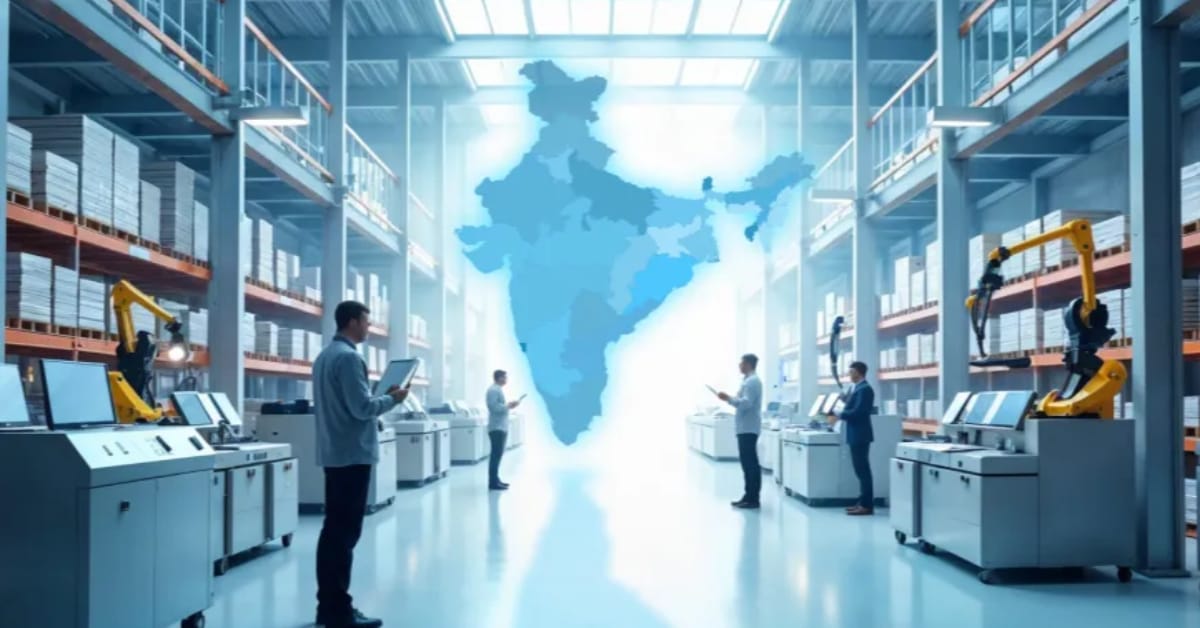News headlines scream about India’s service sector slowdown. The PMI dips, economists worry, and critics sharpen their knives. But here’s what they’re missing, for the first time in 25 years, India isn’t putting all its eggs in one basket, and that to me is not a crisis—it’s called strategic foresight.
The software success trap
For twenty years, India surfed the wave of software services. IT and IT services exports were our economic mainstay, our pride, our identity. In the UPA years, this success led us to pernicious complacency. Economic experts, including stalwarts like ex-RBI Governor Raghuram Rajan, explicitly discouraged manufacturing, something he advocates for even today. And what was their reasoning? Oh, they were very worried about the environmental degradation. So, they asked; “why get your hands dirty with factories when you can write code in air-conditioned offices?” Manufacturing leads to environmental pollution and hastens climate change.
Beautiful rhetoric, terrible economics
This was not advisory economics—in a sense, it was a policy paralysis. While India’s economists argued about carbon footprints, China constructed the world’s factory floor. No environmental consideration prevented them from being America’s manufacturing centre. Such was the time that even Apple’s iPhone—the very icon of American ingenuity—has the “Designed in California, Made in China” tag.
UPA’s environmental excuse: Convenient or cynical?
Let’s talk about the elephant in the room: was the UPA’s environmental concern real or just a rationalization for policy lethargy? If climate change was so important to them, where were the investments in green production, renewable energy infrastructure, or clean tech? The truth is more brutal—while the developed world offshored their “dirty” production to Asia and benefited from economic growth while having cleaner domestic environments, India was instructed to stay in the service provider mode. It’s simple to sermonize about environmental cleanliness when you’re not the one constructing prosperity from the ground up.
The hypocrisy is more understandable when you notice that service sectors have environmental impacts too—giant data centers, power usage, electronic trash. The actual issue was never “environment vs manufacturing,” but always “who dominates the economic value chain?”
The inevitable reality check
Economic history has a clear lesson: monopolies don’t endure, even in services. Success begets competition. While other countries built up their own IT strength, Indian service sector growth was bound to reach a ceiling. You cannot expand perpetually in one industry. Saturation is not failure—mathematics.
In the meantime, our industry stood still. No new investments, antiquated technology, flat productivity. We became world-class in one thing while allowing others to waste away.
Modi government’s masterstroke
Come 2014, and a paradigm shift in thinking: Aatmanirbhar Bharat. The government saw what the UPA would not—the economy must balance with robust manufacturing. Later, the Production-Linked Incentive (PLI) scheme was initiated. Electronics production soared. Defence equipment manufacturing commenced, and most importantly, this was done before the service sector slowdown was evident.
India now produces and exports more than ₹2-3 lakh crore worth of mobile phones every year. We are making high-quality electronics, defense hardware, and creating indigenous technology. The environmental implications? Green can be modern manufacturing too. The decision isn’t economy vs ecology—it’s old thinking vs innovation.
Why the slowdown isn’t a big deal
Yes, service PMI did go down after 15 years of expansion. But this was unavoidable and manageable because:
- Diversification shelters us – Manufacturing expansion insulates the service slowdown to a large extent.
- Cyclical, not terminal – Sectors consolidate, adjust, and recover with new technology
- Global competition loomed – Better to meet it with several robust sectors than one weak pillar
The $5 trillion vision
India plans to reach a $5 trillion economy by 2027-30. Growth in exports is at the core of this plan, which is why there has been huge investment in logistics—new ports, lower costs, investment in robotics and drone technology. This infrastructure benefits both manufacturing and services.
The slowdown in the service sector is not a failure of policy—it’s evidence that India is growing up and moving beyond sole-sector reliance. The true tale is that we’re creating manufacturing power at precisely the moment we must.
When critics attack the government for the service dip, ask them this: Would they prefer we discovered our manufacturing weakness during a deeper service crisis? Strategic diversification isn’t just good policy—it’s survival economics.
India is not leaving services behind. We’re just refusing to be hostage to them. That’s not retreat—that’s evolution.









